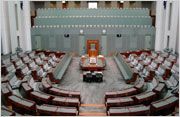Archived News for Health Sector Professionals
The Victorian Government has announced a $36 million injection into Frankston hospital for the facility’s redevelopment and expansion.
The funding, announced as part of a package in the Victorian budget, is expected to generate 64 additional medical and surgical beds in the hospital. It is expected the hospital will be able to care for an additional 5000 patients per year as a result of the allocation
The investment in the Frankston hospital is part of a broader Victorian health spending package that is aimed at generating an additional 800 beds throughout the state.
NT budget boosts health spending
The Northern Territory health portfolio has been allocated a record $1.115 billion in the 2011-12 budget, a $25 million rise on last year.
ACT Health shows more staff, bed and services
The latest report into public hospital performance in the ACT has found increased efficiency, more clinical staff and higher than average bed capacity provided to the Canberra community.
Health report shows improvement
The Australian Institute of Health and Welfare report released on April 29 shows an increase of 378 beds since the Federal Government’s $20 billion health injection in 2008.
Skills shortages in NSW hinder recovery
Skills shortages are continuing to have a significant impact on business performance in New South Wales, according to the recently released NSW Business Chamber - Commonwealth Bank Business Conditions Survey for the March 2011 quarter.
Nominations called for WA Nursing and Midwifery Excellence Awards
Co-workers can nominate a nurse or midwife in a range of categories, encompassing all aspects of health care.
Health reform simulation to feed into reform process
The Australian Healthcare and Hospitals Association (AHHA) is convening a National Health Reform Simulation Event on 21-22 June in Canberra. The simulation will test the Commonwealth and state governments’ health reform plans and will contribute to their effective implementation.
PSA proposes pharmacists for Medicare Local
The Pharmaceutical Society of Australia (PSA) is lobbying for pharmacists and other allied health professionals to be included in the government’s health reform agenda.
Funding allocated for Royal Hobart Hospital
The Federal Government has committed $240 million to a major upgrade of the Royal Hobart Hospital.
Study to assess HWA Workforce Innovation and Reform program
Health Workforce Australia (HWA) has called for tenders to undertake a case study on the delivery of the HWA Workforce Innovation and Reform: Caring for Older People (CfOP) program, as an example of the delivery of a national change program in workforce reform.
Scientists continue campaign against NHMRC budget cuts
Scientists are continuing to campaign against feared cuts to the National Health and Medical Research Council funding in next month's federal budget, amid hopes that the Federal Government may have decided against the $400 million cut.
MAV warns about proposed aged care overhaul
E-learning program shines a light on child protection
The Shining the Light on Child Protection E-learning Program is now available.
$52 million available for primary care infrastructure grants
The Federal Government has announced a new $52.5 million round of funding for primary care infrastructure.
New taskforce to overhaul NSW Health
The new Director-General for NSW Health, Dr Mary Foley, has written to staff of the department, outlining reforms proposed in discussions between the Minister for Health, Jillian Skinner, and Governing Council Chairs and Chief Executives of Local Health Networks, Clinical Support Division Chief Operating Officers, and the senior executive of the Department of Health.
New youth mental health services funded
Ten new headspace youth mental health services will begin operating by the end of the year, with the announcement by the Federal Government of the selection of the lead agencies for operation.
WA health workers funded to target Indigenous health
During a visit to Western Australia today, the Minister for Indigenous Health, Warren Snowdon, announced an extra 63 health workers are being provided to health services across the state to help close the gap in life expectancy between Indigenous and non-Indigenous Australians.
The Australian Government is providing almost $8 million for an extra 63 health workers to be placed in 27 Western Australian health services, including a large number of Aboriginal Health Services. Already 42 of the 63 workers have been recruited.
The 63 positions funded for WA are:
New campaign to promote Aboriginal and Torres Strait Islander health
A new national campaign called Live Longer! has been launched to tackle chronic disease in Aboriginal and Torres Strait Islander communities. The campaign is a central part of the Australian Government’s $21.3 million investment over four years to establish and run Local Community Campaigns.
Pathology industry signs up to cost saving deal
The Federal Government has signed an agreement with the Australian Association of Pathology Practices, the Royal College of Pathologists of Australasia and the National Coalition of Public Pathology under which expenditure growth on pathology through Medicare will be capped to approximately 5% per annum, resulting in savings of $550 million over the five-year period of the agreement.
Draft e-health records plan released
A national blueprint has been released for public consultation for the development of personally controlled e-health records (PCEHR) for their 1 July 2012 launch.
WA funding for mental health training and delivery
The WA Government has provided the Western Australian Association for Mental Health (WAAMH) with funding of $1.695 million over the next two years to distribute to more than 75 non-government not-for-profit agencies.







